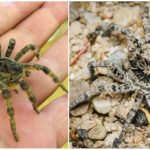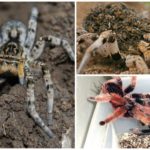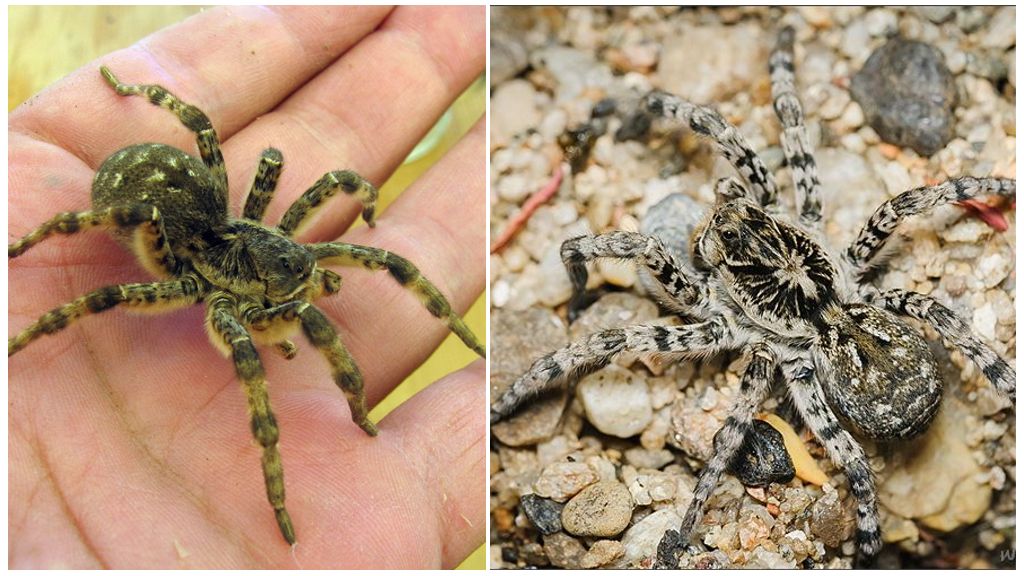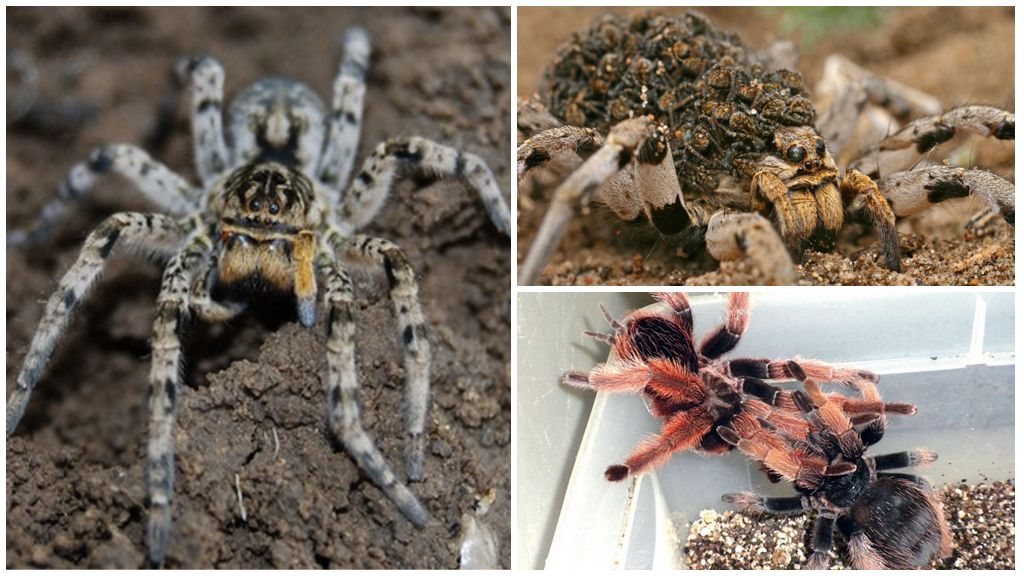South Russian tarantula (spider Mizgir)
- South Russian tarantula (spider Mizgir)
- Breeding spiders
The spider Mizgir or South Russian tarantula is distributed everywhere in central Russia. For a solitary life, the arthropod received another name - the wolf. Predator reaches the size of 32 mm, lives in the wild, often plant as a pet. Does not attack the person, but can bite at self-defense.
Appearance Description
The Southern Russian tarantula spider is one of the largest members of the family in our area.
- The female reaches the size of 32 mm, the males grow to 27 mm.
- The body is divided into 2 parts - a convex abdomen, cephalothorax. The parts are interconnected by a thin jumper.
- 4 pairs of long limbs help not only to move the tarantula, but also are the organs of smell, touch. At the bottom of the legs are hairs, with which the wolf spider receives signals from the external environment.
On the head of a South Russian tarantula there are 8 eyes located in different parts - 4 are looking forward, 2 are on the sides, another pair is back. The visual review is 360 degrees. However, he sees the South Russian tarantula weakly, receives visual images in the form of shadows, silhouettes. Responds well to movement.
On a note!
Mizgir colors vary, depending on the habitat - brown, gray, black. The upper part of the abdomen, the cephalothorae is always darker, there is a pattern in the form of light spots. A photo of the Mizgir spider is located below.
Lifestyle
The wolf spider leads a solitary lifestyle, forms a pair only for the mating period. It lives in arid places, lives in minks up to 50 cm deep. Most of the time it spends in its dwelling, prefers to hunt “from home”. Before entering she weaves a web, monitors her condition.Even when they get hungry, the South Russian Mizgir does not go far from their own homes.
The main diet - small insects, relatives of spiders, snails, caterpillars, as well as frogs, little mice, snakes. At the sight of the victim, the wolf freezes, waits for the right moment, after which it almost instantly rushes to attack. If the prey expects a predator in the web, it is not particularly in a hurry, with a confident step approaches, puts a bite, injects poison, its own saliva. Under the influence of secretions, the insides of the victim turn into a liquid mass that the mizgir drinks.
Interesting!
In the deep autumn the wolf hides in the mink, clogs the entrance with grass, moss, cobwebs. Falls into anabiosis, wakes up in the spring, begins to lay eggs. The life span of the female is about 3 years, the males die almost immediately after the termination of the mating period.
Breeding
The process begins at the end of the summer. The male carefully cares for the female, attracting her attention. After mating, his task is to quickly get out of sight, because a hungry aggressive female can eat it.
After hibernation in winter, the spider builds a cocoon from the web, lays there several hundreds of eggs.It drags the whole period of development of the larvae, as well as some time after their birth.
Interesting!
The belly of the mizgir is dotted with small spiders, which number up to 50 pieces. Mother feeds young offspring, as they grow up, throws them away from the mink.
Danger to humans
The poison of the southern Russian tarantula is dangerous to insects, amphibians, small rodents. Toxic substance instantly causes paralysis, disrupting the nervous system. The spider doesn’t rush at the person, but it can bite, feeling for itself danger.
Mizgir bite painful, accompanied by swelling, redness. In children, people prone to allergies may experience a deterioration in health - weakness, headache, nausea, vomiting, dizziness, fever. The condition is normalized independently within 2 days or antihistamine preparations are required.
Due to the large size, attractive appearance of the southern Russian tarantula is often kept as a pet. Mizgir - a home spider feels great in artificially created conditions. Does not fall into hibernation, lays eggs almost immediately after fertilization. The duration of the female is up to 3 years.









